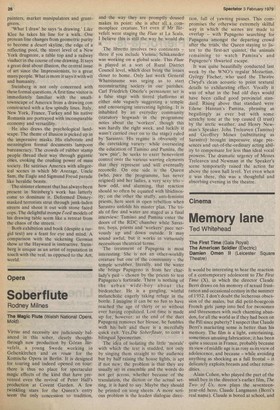Line-walking
David Austin
The retrospective exhibition of Saul Steinberg now showing at the Serpentine gallery is organised by the Whitney Museum, New York. Reproductions of all the work in the show are included in Saul Steinberg with text by Harold Rosenberg (Deutsch L12.50).
Steinberg, who was born in Romania in 1914 studied architecture in Europe before emigrating to the United States in 1942; he had already become-a regular contributor to the New Yorker. Re is not a fine artist but a cartoonist. His work is thus free of the arrogant obscurity Piet makes the output of so many of his contemporaries incomprehensible to all but a tiny coterie of painters, market manipulators and grantgivers.
'What I draw' he says 'is drawing.' Like Klee he takes his line for a walk. One protean line changes from geometric purity to become a desert skyline, the edge of a reflecting pool, the street level of a New York drugstore, a table top and a railway viaduct in the course of one drawing. It says a great deal about illusion, the central issue of art since the Impressionists, to a great many people. What is more it says it with wit and humanity.
Steinberg is not only concerned with these formal questions. A first time visitor is immediately familiar with the smalltownscape of America from a drawing con constructed with a few spindly lines. Italy, New York, France, Turkey and his native Romania are portrayed with incomparable economy and versatility.
He also draws the psychological landscape. The theme of illusion is picked up in the impressive masks. His elaborate and meaningless formal documents lampoon bureaucracy. The crowds of rubber stamp people thread their way through gigantic cities, evoking the crushing power of mass society. He satirises America with allegorical scenes in which Mr Average, Uncle Sam, the Eagle and Sigmund Freud parade like heraldic beasts.
The sinister element that has always been present in Steinberg's work has latterly come to dominate it. Deformed Disneymasked terrorists strut through junk-laden streets and shoot it out with stone faced cops. The delightful trompe l'oeil models of his drawing table seem like a retreat from the chaos of the streets.
Both exhibition and book (despite a turgid text) are a feast for eye and mind. A comparison with the sickening German show at the Hayward is instructive. Steinberg is unique as an artist of reputation in touch with the real, as opposed to the Art, world.



































 Previous page
Previous page